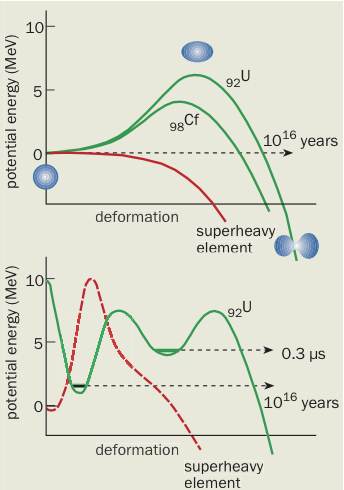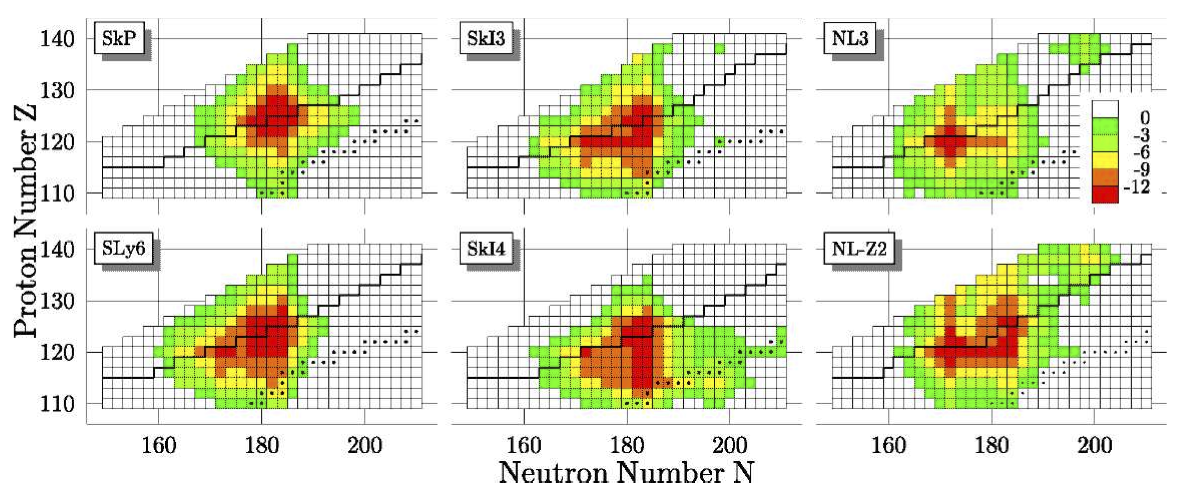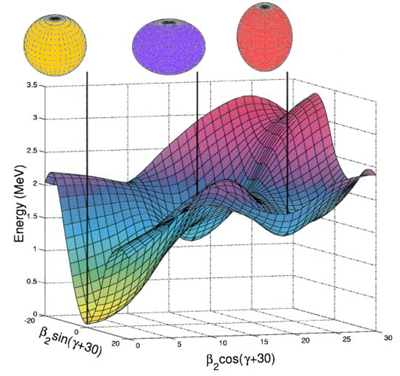The SAGE Spectrometer
The majority of the mass in the universe is made up of atomic nuclei that lie at the centre of atoms. Nuclei contain positively charged protons and electrically neutral neutrons. The lightest known nucleus is that of hydrogen that contains just one proton but no one yet knows how heavy a nucleus can be; in other words, just how many neutrons and protons can be made to bind together. The aim of SAGE is to address this question by studying the heaviest nuclei that can be made in the laboratory and studied in-beam. The heaviest man-made elements today (unnamed as yet) have as many as 118 protons, but have been produced in tiny quantities of a few atoms only and are extremely difficult to create and study. SAGE will study nuclei in the region of nobelium, where higher production cross-sections allow more detailed in-beam investigations.
Both protons and neutrons are held together by the strong nuclear force but protons are repelled from each other because of their electric charge. The nuclear force has an extremely short range, affecting nearest neighbours only, so that, as more and more protons are added to a nucleus the electrostatic repulsion will eventually become stronger than the nuclear binding forces and the nucleus will become unstable. The neutrons and protons will no longer stick together. This should happen for nuclei beyond uranium, which has 92 protons, but the existence of heavier species comes about because of the internal structure within the nuclei. Just as noble gases owe their inert chemical behaviour to a specific arrangement of electrons that has extra stability, so certain "magic" proton and neutron numbers also enhance nuclear stability. This project is concerned with a detailed study of the underlying mechanisms that yield this extra stability and allow "superheavy" nuclei to exist.
Yu. Ts. Oganessian, Superheavy elements, Physics World July 2004
The main focus of this work will be on nuclei around nobelium (with 102 protons), approximately halfway between the well-studied nuclei around uranium and the frontier of superheavy elements. Here spectroscopic methods can be used to gain detailed insights into the shape of the nucleus and the behaviour of the outermost protons and neutrons that leads to extra stability. These methods use the fact that the principal way an excited nucleus loses energy is through γ decay (emission of a high-energy photon). In heavy, highly charged nuclei this mode is in increasing competition with an alternative mechanism, internal conversion, in which the excess energy is given to an atomic electron that is then ejected from the atom. Indeed, to obtain a complete set of information about such heavy systems it is imperative to study these competing decays in the same experiment, since either one alone reveals only a partial picture.
In order to produce these exotic nuclei, calcium projectiles will be fused with a heavier target, for example lead in the case of nobelium. This will be achieved by accelerating calcium to very high energy, using the cyclotron at the Accelerator Laboratory in Jyväskylä, Finland, and then firing the calcium nuclei at a lead target. The nobelium produced will be isolated and its decays detected in a sophisticated suite of detection devices that form the GREAT focal-plane spectrometer.
This program of research will yield the most sensitive probes of nuclear structure at the high mass frontier to date. Detailed and systematic spectroscopic studies will be made on a variety of nuclei around the nobelium nucleus with mass number 254, which in turn, will lead to a greatly improved understanding of the behaviour of superheavy nuclei. These experiments will help theorists to refine and test their calculations that, for many decades, have attempted to predict how heavy nuclei can be, with widely differing results. The resolution of this problem will help us to describe the complex many-body system that the nucleus represents. The difficulty of this endeavor can be summarised in the following figure. The total shell correction calculated for superheavy nuclei around the expected island of stability around Z = 120 and N = 180 is plotted. The hazy limits predicted by the calculations stress the necessity for more input from experiments.
M. Bender et al Phys.Lett.B 515(2001)42-48
In addition to superheavy nuclei studies SAGE can be employed in the research of shape coexistence in the light lead and mercury region. In these cases a triplet of low-lying 0+ states associated with different macroscopic shapes is observed. The properties of the low-lying 0+ states and the inter-band transitions between the same spin-parity states of rotational oblate and prolate bands can be investigated through simultaneous conversion electron and γ-ray spectroscopy. These experiments will measure the conversion electron strengths of the inter-band transitions (oblate to prolate) and the location and feeding of the low-lying 0+ states. The measurements of the E0 matrix elements in neutron mid-shell isotopes of lead and mercury will provide direct information on configuration mixing and shape changes in these nuclei.
A. N. Andreyev et al Nature,Vol 405, 430 (2000)




